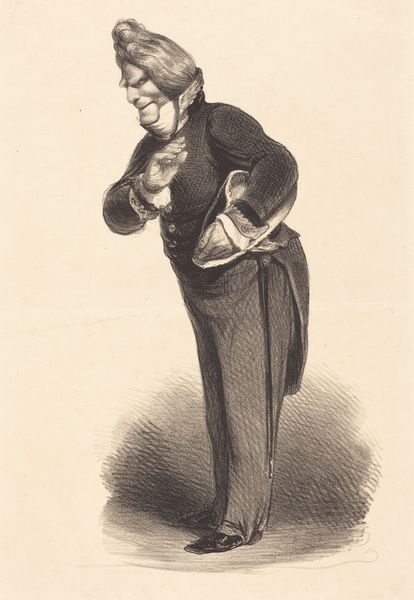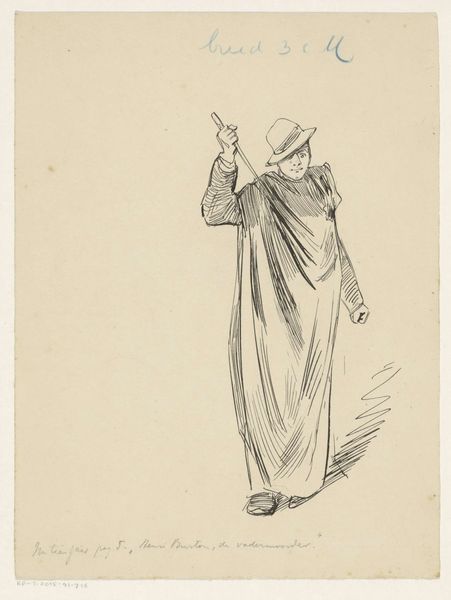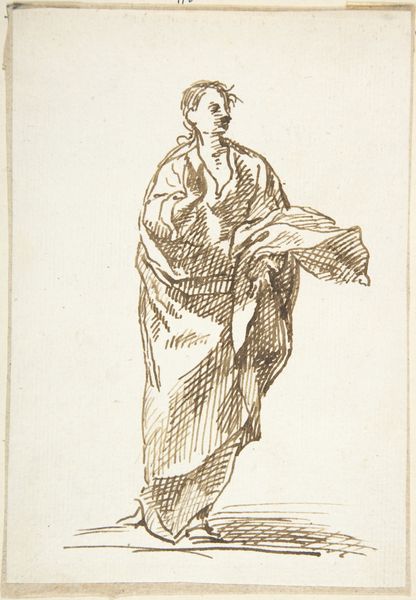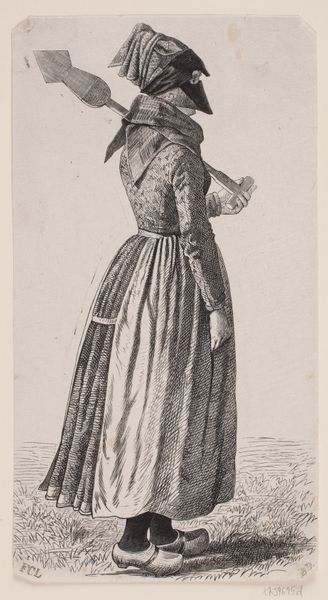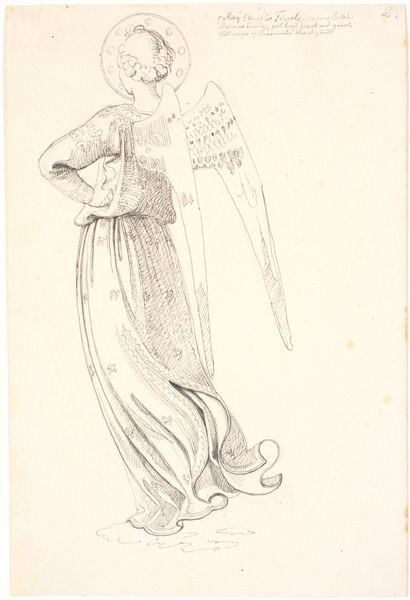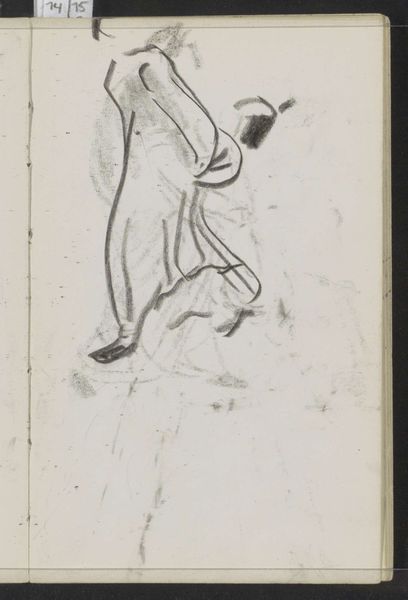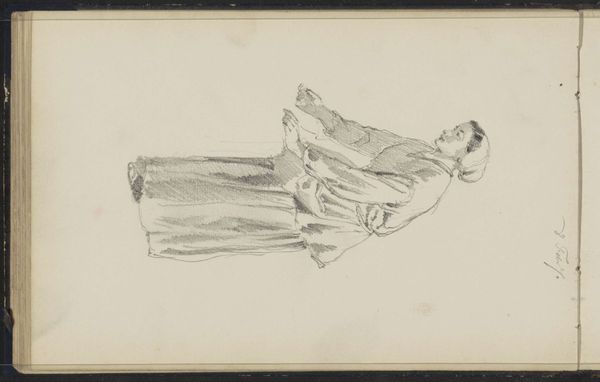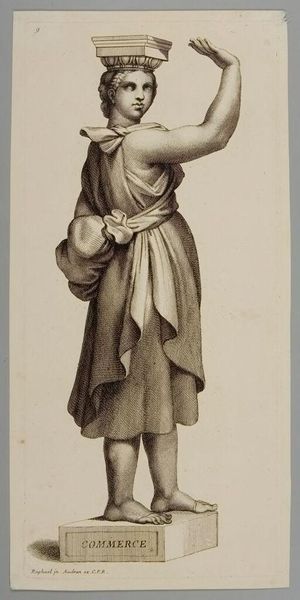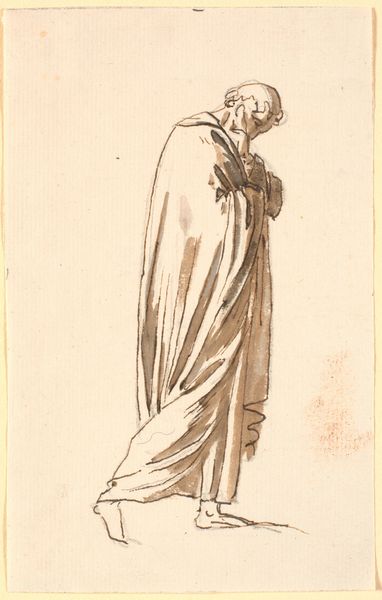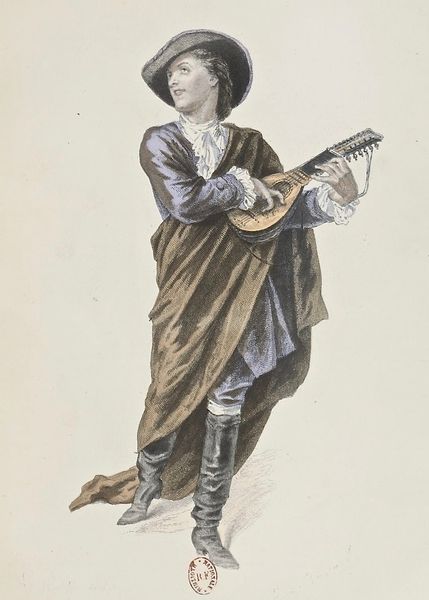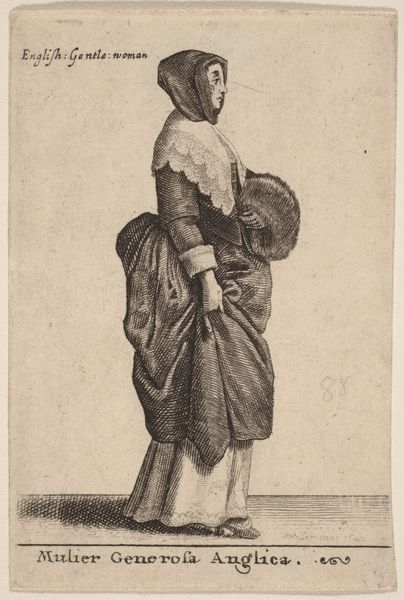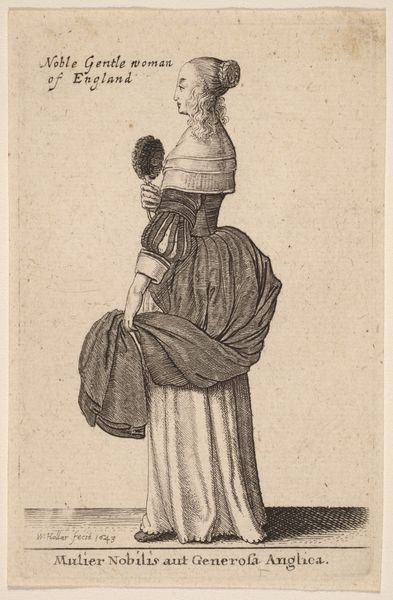
drawing, pen
#
portrait
#
drawing
#
caricature
#
charcoal drawing
#
historical fashion
#
pen
#
history-painting
#
graphite
Copyright: Public domain
Editor: Here we have Émile Bayard's "Bazille, from 'The Barber of Seville'," created in 1876 using pen and graphite. The subject’s quirky posture and exaggerated features give the artwork a rather comical feel, don’t you think? How would you interpret Bayard's intention with this caricature? Curator: Well, aren't caricatures glorious exaggerations of our foibles and vanities? This image almost dances off the page, doesn’t it? The man, a clear portrayal of a character from "The Barber of Seville," peeks, schemes, almost seems to hum the opera itself. Bayard has not just drawn a likeness, he has conjured the character's very essence – that delicious blend of mischief and self-importance. Look how his very form seems to lean into the joke. Do you get the sense of that performance tradition here? Editor: Definitely. I also wonder if the subject's pose is supposed to enhance the comedic effect. It makes me laugh a little, imagining someone contorting themselves to get a better look. Curator: Precisely! Bayard plays with this beautifully. It's like he's taken a single frame from the opera, an instant of peak comedic timing. The exaggerated nose, the furtive glance, it all speaks to the drama of the theatre, the exaggerated reality of performance. I think there's such a lively dynamic, it's hard not to see the satire. And that hat... What does that absurd hat communicate to you? Editor: Hmm, the hat amplifies his persona, exaggerating him like he's a walking, talking cartoon character. I've never considered caricatures to have so much depth. Curator: And that, my friend, is where the true joy of art resides—it challenges us to see beyond the surface. This one, through laughter, I suspect, lets us peep behind the curtain of both art and society. What a mischievous gift.
Comments
No comments
Be the first to comment and join the conversation on the ultimate creative platform.
